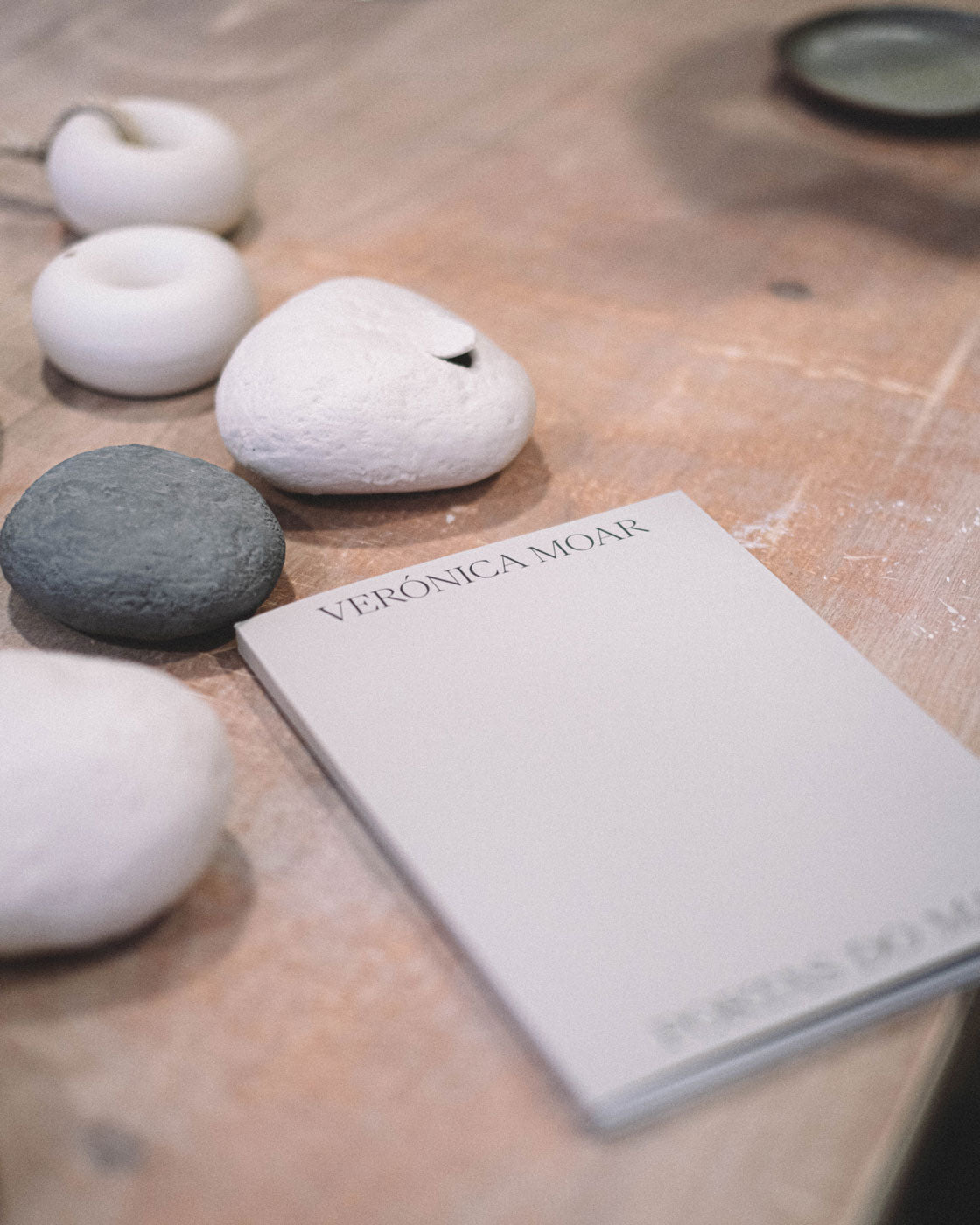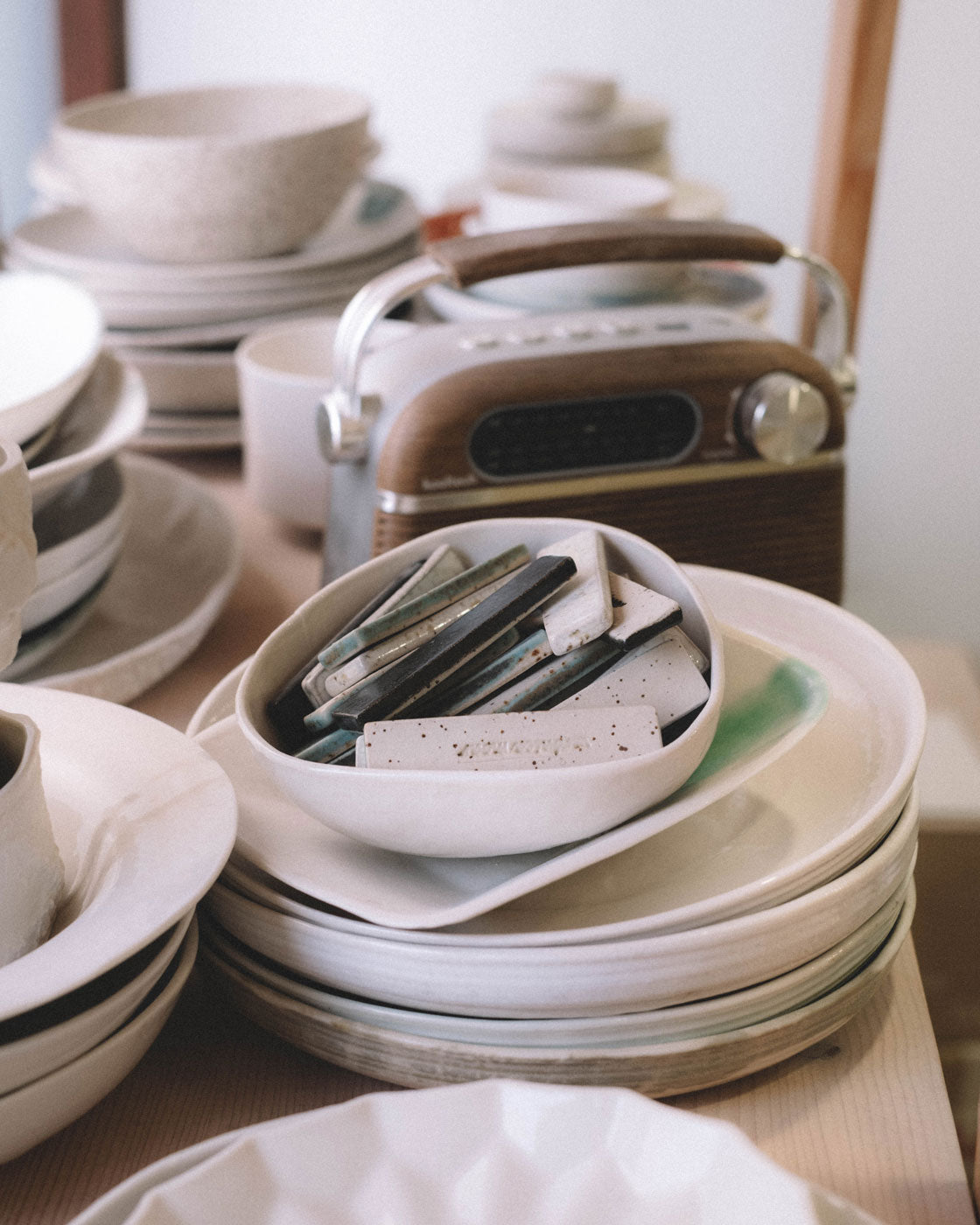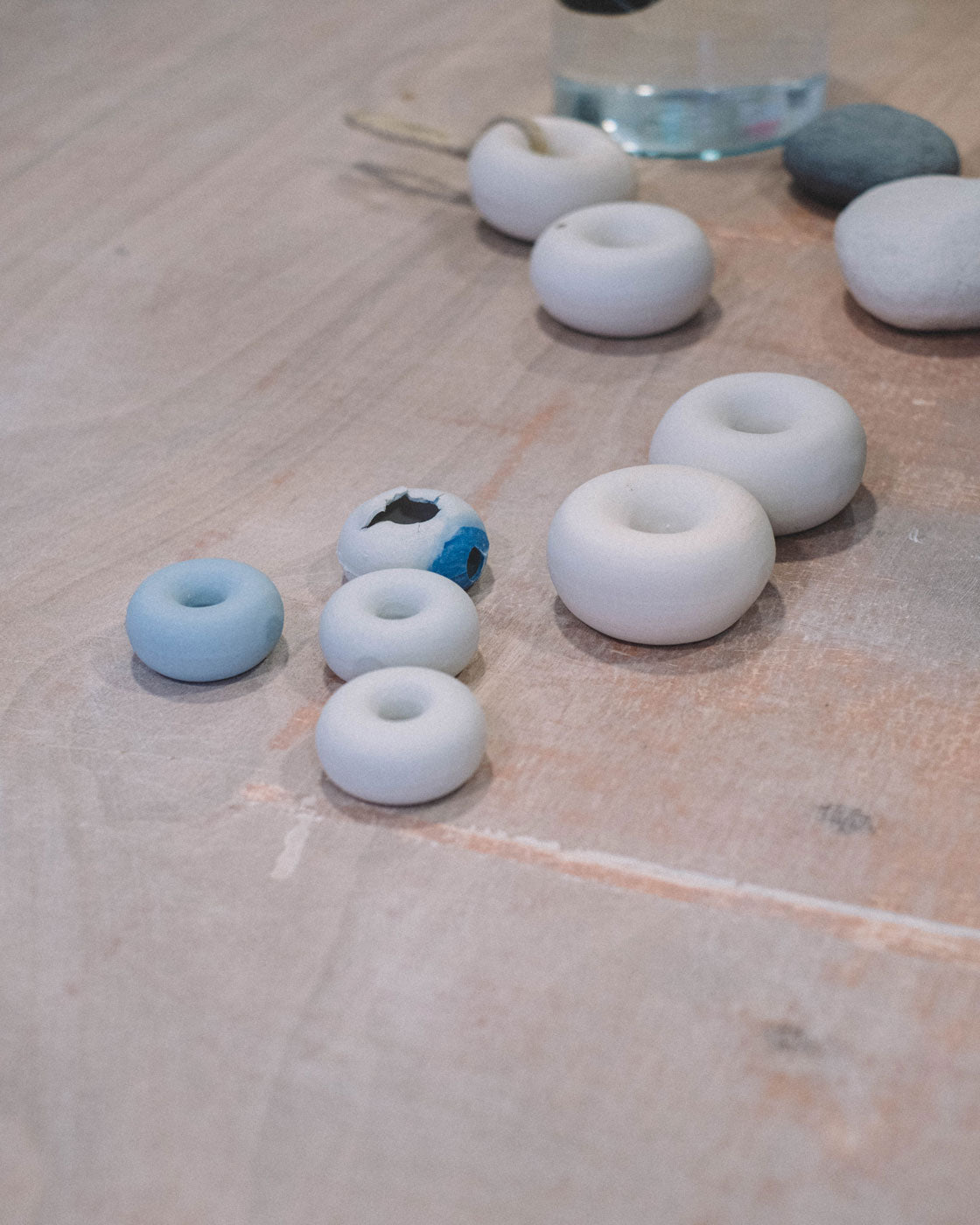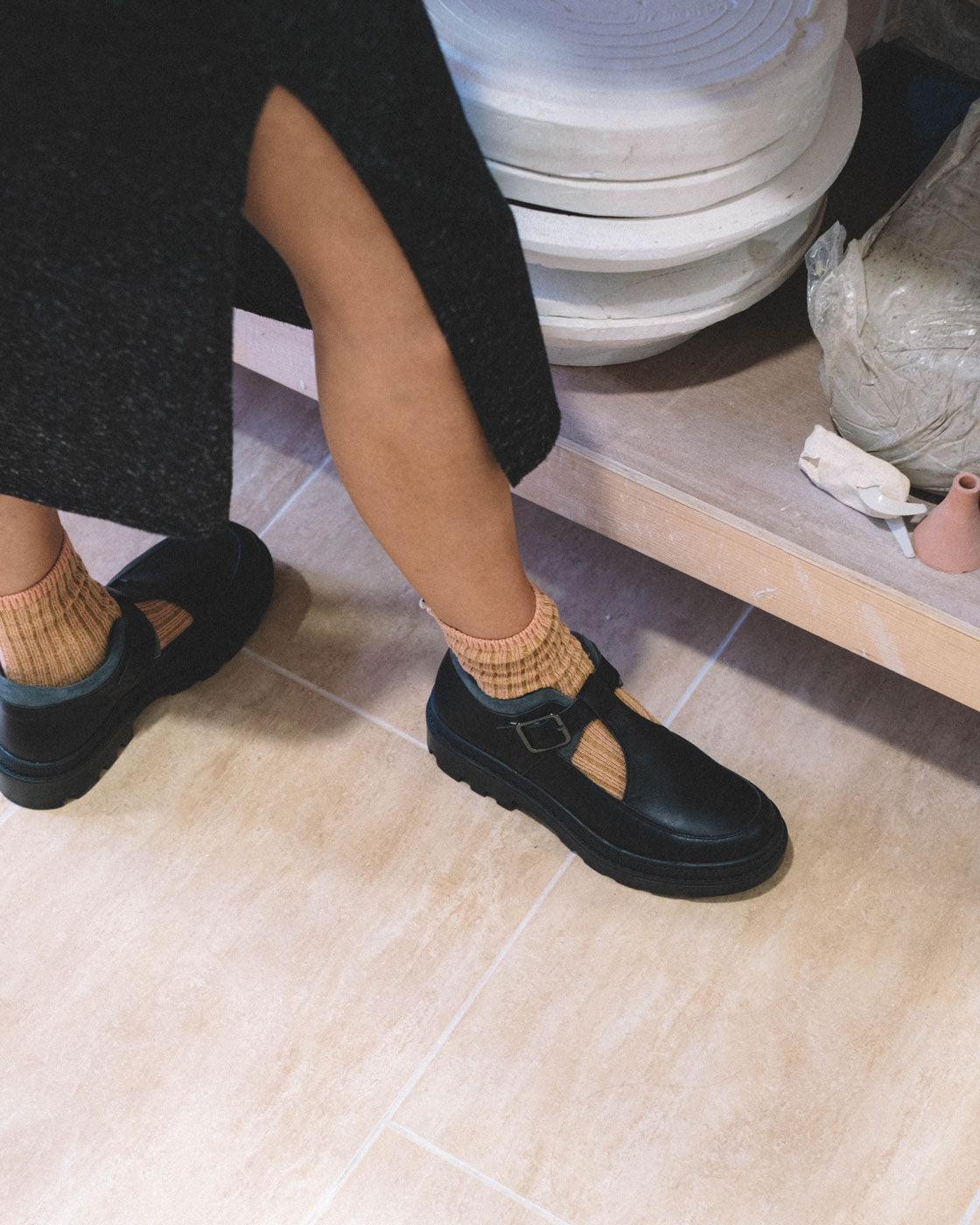DIALOGUE WITH VERONICA MOAR


MODELS: LYRA BLACK
After years of studying English philology and interpreting sign language, Verónica Moar left and never looked back. Now, from her cozy ceramics studio in the Coruña neighborhood of Santa Margarita, she channels her creativity, her love for the Atlantic and her sensitivity, giving life to ceramic pieces full of expressiveness. Join us through this interview and discover the work of a ceramist whose work goes beyond function.


Your vocation as a ceramist was born out of a change in your life. Tell us more about what made you lean towards clay?
The truth is that it was quite a coincidence. I had a stable office job that was completely related to my training as an English philologist and sign language interpreter, but there came a time when I felt that I couldn't imagine myself doing that in the future, so I decided to leave in 2008. As I have always been quite restless, and above all very curious, I decided to go to the school of arts and crafts to simply ask for information about the artistic ceramics workshop they were teaching and that same day I left there enrolled. I remember that the first week of class I was already completely hooked.


Of the entire process of creating a piece, what part do you enjoy most?
Without a doubt, what excites me the most is the initial phase, when the idea is almost a seed that is developing in my head. Then, I start to do research, look for references and information, decide what material to use... it's like a riddle that I have to solve based on many trials (and errors) until I manage to shape something that was previously only in my imagination. Also, when the pieces leave the workshop and pass into other hands, I feel that the circle is closed and that the whole process and effort make sense.
Does your training as a philologist influence your creative process?
I am increasingly convinced that it does have an influence. Deep down, what I like is telling stories and this has a lot to do with my passion for literature (they were always my favourite subjects during my degree). But contemporary dance, which is an art that I am passionate about, also has a lot of influence on the process. In addition, I believe that movement and the body are closely related to the act of shaping clay; that is why in my latest works I try to show this connection between words, dance and ceramics.

MODEL: LYRA BLACK

Your ceramics are strongly influenced by Japanese craftsmanship and philosophy. After spending some time in Japan, you returned to A Coruña. Do you think that the north, especially Galicia, influences the shapes and colours of your pieces?
Yes, it was in Japan where I understood the value that a piece of ceramic can have – there it is something very serious and respected – regardless of whether it is a functional piece of ceramic, for everyday use, or an artistic proposal.
Today, my work is strongly influenced by the place where I live: the Galician landscape, the Atlantic, the rocks with their shapes and shades, are often a reference and a starting point.
Your latest works (Lítica, for example) are closely linked to your roots, to the sea, to movement… More and more, do you feel the need to create pieces that speak beyond their function?
Yes. As I mentioned before, I trained in artistic ceramics. At school they taught me all the techniques to create a ceramic piece: churros, plates, wheel, modelling, etc. They made them available to me so that, based on a good technical base, I could decide if what I wanted to make was a cup or something else. I suppose that my previous training as a philologist and my fascination with dance have influenced my desire to make and share with others this “other thing”, this very personal way of understanding contemporary ceramics.